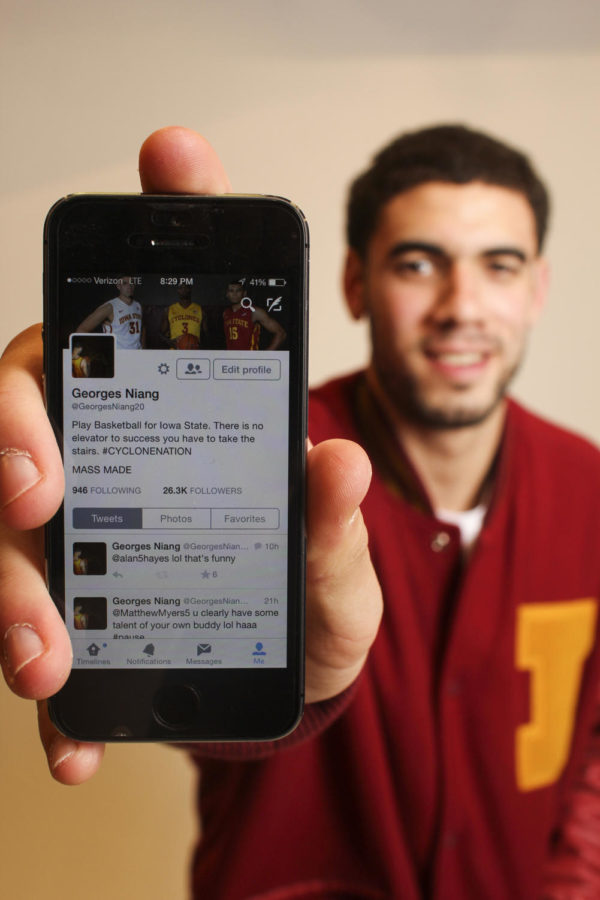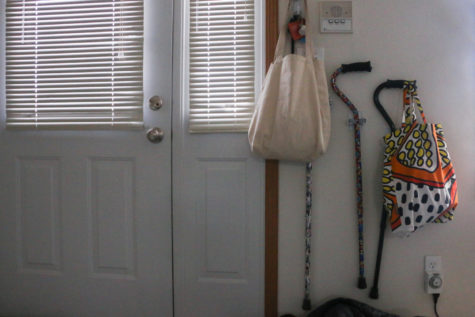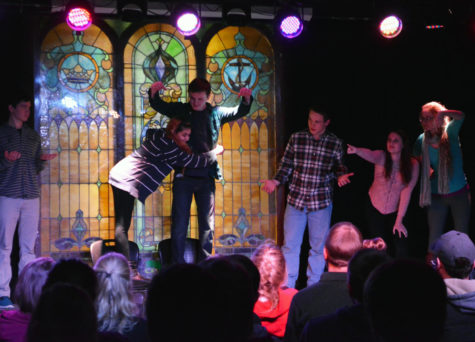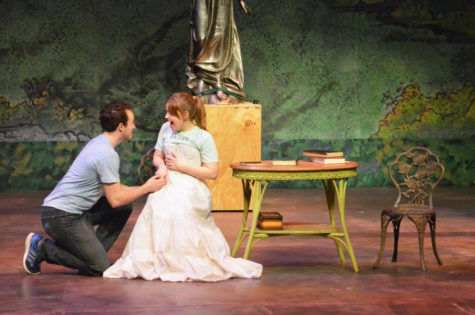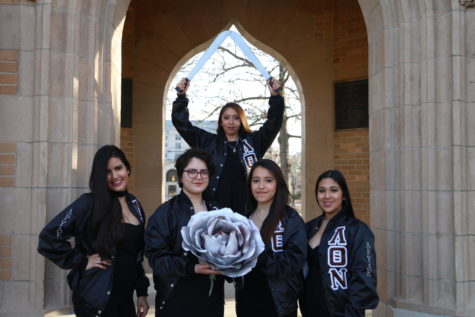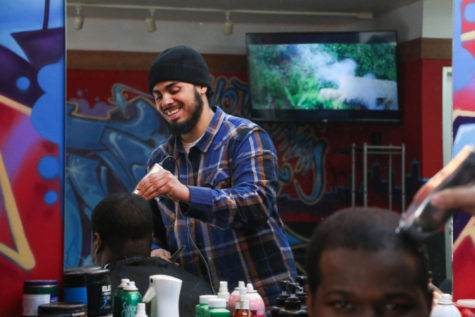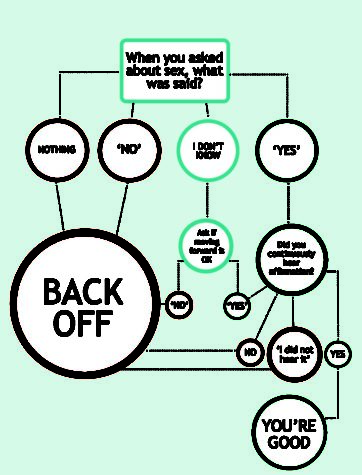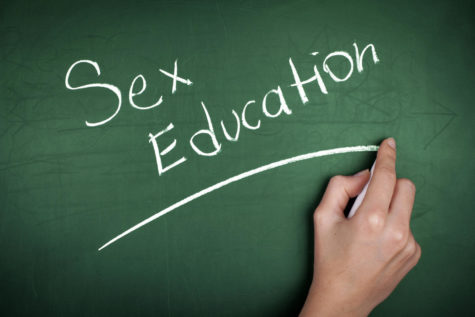Student athletes face challenges on social media
Kelby Wingert/Iowa State Daily
ISU men’s basketball forward Georges Niang has over 26,000 followers on Twitter. Although there is no overall ISU Athletics policy for student athletes on social media, they must be careful of what they post because of how it can be interpreted and represented.
January 21, 2015
Imagine trying to express your thoughts to more than 25,000 people on Twitter, nearly ten thousand more people than the capacity of Hilton Coliseum.
For ISU basketball star Georges Niang, that’s just a normal day on his Twitter. Everything he says is monitored and can be interpreted differently. His actions and opinions are constantly watched by thousands of eyes.
“Obviously, sometimes it’s a little much to take, but I think going into the situation you realize what you’re getting yourself into,” said Niang.
College athletes on campus are sometimes treated like student celebrities, being easily recognized and expected to behave their best at all times. However, social media can make the fine line between right and wrong hazy for athletes.
“There’s a level of conduct we expect our student athletes to demonstrate,” said Steve Malchow, a senior associate director in the athletic department.
Athletes at Iowa State attend an annual compliance meeting before school starts, which briefly touches on the subject of social media. The coaches are responsible for setting the majority of rules and one specific policy is not used for all sports.
“I think the bigger part of the education occurs with the coaches and their teams,” Malchow said.
Coaches are responsible for setting expectations of what’s appropriate concerning social media. The guidelines may vary depending on the sport. Athletes in more high profile sports such as football and basketball may have more restrictions than sports that do not have as many people following them.
“To have something black and white is very difficult in something like this because something somebody may post on social media may be really offensive to someone but isn’t to someone else,” Malchow said.
Fans and followers who don’t know athletes personally can find it easy to criticize or misunderstand athletes’ posts.
Niang said they don’t need to set a specific policy.
“The university does a good job of letting the coaches handle their players,” Niang said.
Mistakes happen and athletes sometimes run into trouble, whether it’s social media or not. The common problem is not that the athletes are trying to look bad or offend anyone, it’s that some athletes have better judgment of what may look bad or offensive on social media in general. It’s often just having the knowledge of how to word your opinion or statements.
“You can express your feeling in a better way just by the choice of words you use,” said P.J. Harris, an ISU football player.
It’s questionable whether athletes need more training with how to communicate and better express themselves to a large audience. Many schools prohibit their athletes from having social media accounts at all.
The banning of social media is not something that has been strongly considered for Iowa State, said Calli Sanders, a senior associate director of athletics.
Iowa State chooses to take the learning approach instead of restricting athletes because it will help them in the future, Malchow said.
The athletic department doesn’t believe changes in managing the athletes’ usage are necessary at this time.
Harris said his coaches are mature about it but the team should get more guidance with expressing themselves to a large audience.
“Outside our sport, we feel like we have to represent our sport in a certain way but we are students and we are on social media sites. Whatever we say on sites we might think is the norm,” Harris said.
When it comes to personal opinion or thoughts, it’s hard to say what’s normal and what is not. Some people are better at judging their content than others.
When it comes to social media, athletes have to be extra cautious, which can be difficult when being instigated or criticized for how they perform. It can be overwhelming during their season. Athletes must decide if they’re crossing the line when they choose to acknowledge fans who use inappropriate language or take ISU athletics too seriously.
“Nobody is trying to purposely mess up or have a bad game, it’s stuff that just naturally happens,” Niang said.
The fine line falls on athletes who choose to acknowledge fans who use inappropriate language and take it too seriously.
Niang said he knows how to “play along with it.” He’s replied to tweets using humor. A few examples include a photo of his Big 12 championship ring or a photo of him scoring against an Iowa basketball player during the traditional rivalry football game between Iowa and Iowa State. The tweet got 831 retweets and 1,578 favorites.
“I probably shouldn’t have sent that out,” Niang said. “I was just happy for the football team and figured I’d go along with the Hawkeye fans coming at me.”
And when it’s the opposite, such as thousands of fans praising him after games on Twitter, Niang knows how to stay humble.
“Everyone loves you when you’re doing well but you can always improve,” Niang said.
ISU quarterback Sam B. Richardson chose to acknowledge negative tweets directed at him instead of responding to them after a game. He reposted them for others to see.
“People need to know the fine line of what’s okay and not okay,” Niang said. “There are kids that follow us.”
Iowa basketball coach Fran McCaffrey forced his players to shut down their Twitter accounts last year after senior Zach McCabe lashed out at his critics after a game.
If athletes refrain from posting controversial material and giving into twitter attacks, they still face the risk of association. They can’t be around anything inappropriate or with anyone who could look bad, such as alcohol or bad language. Even if what they are doing is what they are supposed to, if something looks bad, then they may be seen as guilty. They must learn to be conscious of how they may be seen at all times.
“I have to put my sport first and I have to always be thinking about my team when I go out,” Harris said. “I’m always thinking about my team, like ‘will this look bad? What will my coach think? What will my coach do to me if I get in trouble?’”
The paranoia and restrictions is something they have learned to make habit.
The ISU gymnastics coaches require their gymnasts to follow them on all social media sites to monitor what they are posting.
“Everyone’s idea of socially acceptable pictures or comments is different, it’s definitely a learning curve for kids and some it’s not a problem,” said Kristin Maloney, an ISU assistant gymnastics coach.
Female athletes also have to take more caution in what they are wearing in pictures in order to avoid criticism from the public.
With some sports being watched more extensively than others, rules differentiate between high profile and low profile. Gymnastics has a smaller audience but many young gymnasts follow the girls on the team and seek them out after their gymnastic meets.
Kristen Decosta, an ISU gymnast, said it’s hard to see negative criticism toward any ISU athlete when practicing so many hours a week plus having student responsibilities.
“A lot of people forget how much time and effort we put into it and are so quick to bad-mouth us,” Decosta said. “Just because we have Iowa State on our back at all times, that should not make us invincible.”
Bad-mouthing does not only happen with non-athlete students. An incident last year involved an ISU football player tweeting about the ISU basketball team while they were losing. He ended up getting suspended for a short time.
The gray area of today’s social media will probably never be defined. If athletes were given more guidance on how to deal with public exposure, it might prevent problems they face with social media. As of right now, Iowa State does not have a program for athletes; they understand they have to watch their content.
“I don’t think anyone would go out and disrespect their family. Our sport is like your last name. Everyone in your family has the same last name and you want to represent your family,” Harris said.

